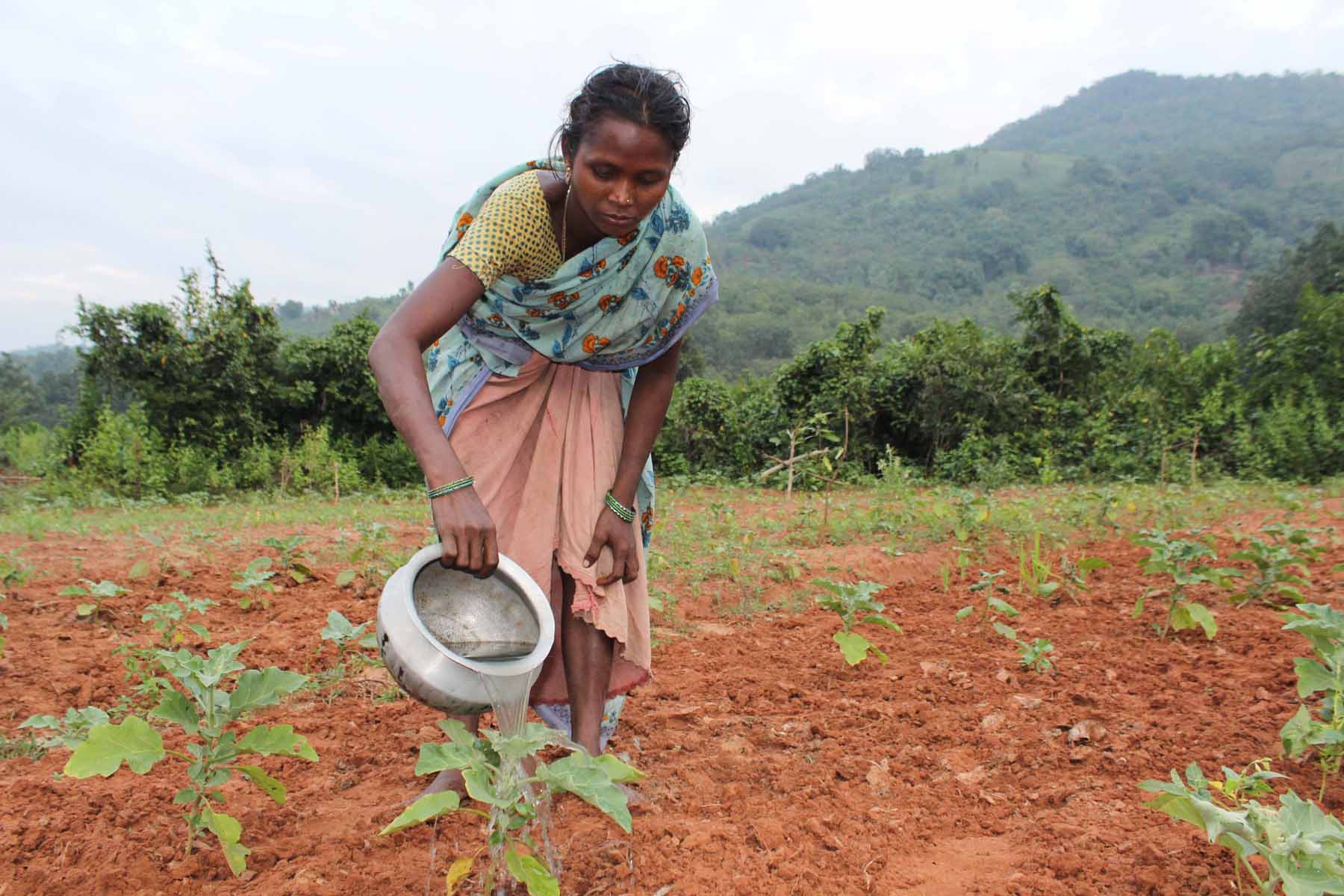If I had asked my colleague and friend Vijay Kumar Thallam 10 years ago about the state of agriculture in Andhra Pradesh, India, the prognosis would have been grim. Soils had been eroded, productivity has plateaued, the costs of cultivation were increasing year after year. Fast-forward to today and the outcomes of The State of Food Security and Nutrition in the World (SOFI) 2021 report confirm an equally dire view, but on a global scale: tens of millions of people have joined the ranks of the chronically undernourished over the past five years and a colossal 2.3 billion people lacked year-round access to adequate food in 2020 alone. It’s easy to feel paralyzed in the face of such shocking findings, knowing that behind every figure and statistic is a person, a family, a community.
But, then I speak to Tallam and remember there is a world full of beacons of hope, working tirelessly for a resilient, equitable and healthy future of food.
Thallam is a retired public servant with Andhra Pradesh’s agriculture department. He was responsible for conceiving a program to bring a natural farming method called Zero Budget Natural Farming to the state in 2016. Renamed Community Managed Natural Farming in 2019, the program is overseen by Rythu Sadhikara Samstha (RySS), a non-profit organization that was established by the state government.
Community Managed Natural Farming (CMNF) eschews the use of synthetic chemical fertilisers, pesticides, and herbicides, catalyzing a radical paradigm shift from conventional chemical based farming to agroecological-based natural farming methods across the state. Consider CMNF’s four core principles, all of which have been localized to the Indian context, and you begin to understand how revolutionary this program can be.
The first principle is Beejamrutham, which involves coating seeds and young plant roots in a microbe-rich formulation produced from cow urine and dung. The treatment protects the plants from fungus and diseases that can affect crops during the monsoon season. The second principle is Jeevamrutham, where the soil microbiome is enhanced through a combination of fermented local ingredients; which, together, promote the activity of microorganisms and earthworms in the soil. Third is Achhadana, the name for cover crops and mulching. And, finally, the principle of Waaphasa ensures plant roots have access to water vapour, which can be achieved through aeration and a reduction in water for irrigation. Notably, as the program has evolved in recent years, greater primacy is being given to the third principle – diverse cover crops and minimal tillage.
For decades, a false narrative has prevailed over food systems and influenced how they operate, regardless of context. It is the belief that boosting agricultural production is the best and only way to solve food insecurity challenges. This narrative favors corporate agriculture and, although it has been proven false, it remains surprisingly persistent — despite having been challenged by many food systems experts who view the root causes of food insecurity as much more complex.
Now, with more than 700,000 farmers and farm workers engaged and enjoying the direct economic benefits of resilient crops, improved health due to safe agriculture practices, and consumption of chemical-free food, CMNF is evidence that the kind of bold, structural change we need to deliver sustainable agriculture that protects the climate, biodiversity, livelihoods, food security, and more, is not only possible – it is happening.
By effectively restoring natural ecosystems and working with and instead of against nature there are some salient lessons to apply to food systems transformation, especially in the context of the UN Food Systems Summit and COP26 later this Fall.
- Accelerate agroecological transitions. The CMNF programme shows that natural farming is scalable in a reasonable period of time, provided there is a proper strategy in place to support the agroecological transition. In just 4 years, it has a footprint in 30% of the villages of the State and around 10% farmers are enrolled in the programme. Key to their success has been the engagement of women’s groups.
- Take a whole village and landscape approach. The objective of CMNF is to transition all the farmers in a village into natural farming practitioners so RySS and the Government of Andhra Pradesh depend on peer-to-peer learning networks, where individual farmers share their successes with others in real-time, for knowledge to spread. This farmer-to-farmer dissemination of training and support has been central to the program’s approach and, crucially, farmers’ own experiments and their learnings are important to the continued success of the program.
- Invest in the long-term, not just the start-up phase. We’ve learned in India that a farmer requires 3 to 5 years to make the transition. Since the trainers are themselves practicing farmers, their credibility is very high and they are able to motivate farmers to change. As a result, longer-term research and monitoring and evaluation cycles are needed so that the impacts of the program on communities and ecological systems are better understood.
Importantly, during the COVID-19, the importance of resilient regional food systems was highlighted. Many people returned to their villages from cities during lockdown. In Andhra Pradesh, farmers were able to pivot to supply their communities with food in new and entrepreneurial ways despite the acute crisis.
As the call for transformational change grows louder, the progress in Andhra Pradesh shows us exactly what this could involve. Like many other “beacons of hope”, their work shines a light on both the failures of the old, industrialized food system and also on the possibilities of new approaches; creating an example for us to follow.
Teaser photo credit: Courtesy of the author.





